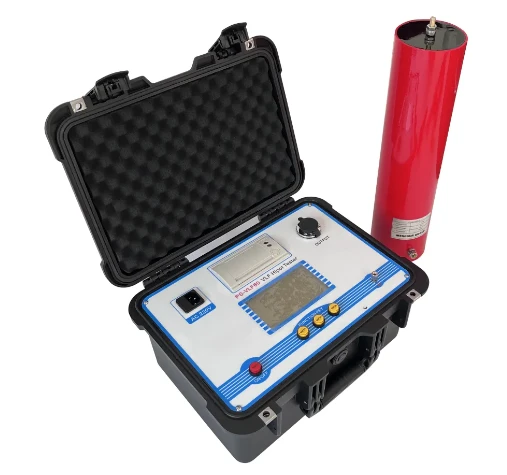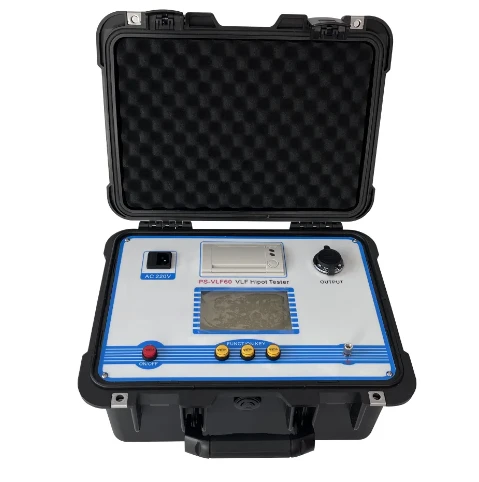 English
English



-
 Afrikaans
Afrikaans -
 Albanian
Albanian -
 Amharic
Amharic -
 Arabic
Arabic -
 Armenian
Armenian -
 Azerbaijani
Azerbaijani -
 Basque
Basque -
 Belarusian
Belarusian -
 Bengali
Bengali -
 Bosnian
Bosnian -
 Bulgarian
Bulgarian -
 Catalan
Catalan -
 Cebuano
Cebuano -
 China
China -
 China (Taiwan)
China (Taiwan) -
 Corsican
Corsican -
 Croatian
Croatian -
 Czech
Czech -
 Danish
Danish -
 Dutch
Dutch -
 English
English -
 Esperanto
Esperanto -
 Estonian
Estonian -
 Finnish
Finnish -
 French
French -
 Frisian
Frisian -
 Galician
Galician -
 Georgian
Georgian -
 German
German -
 Greek
Greek -
 Gujarati
Gujarati -
 Haitian Creole
Haitian Creole -
 hausa
hausa -
 hawaiian
hawaiian -
 Hebrew
Hebrew -
 Hindi
Hindi -
 Miao
Miao -
 Hungarian
Hungarian -
 Icelandic
Icelandic -
 igbo
igbo -
 Indonesian
Indonesian -
 irish
irish -
 Italian
Italian -
 Japanese
Japanese -
 Javanese
Javanese -
 Kannada
Kannada -
 kazakh
kazakh -
 Khmer
Khmer -
 Rwandese
Rwandese -
 Korean
Korean -
 Kurdish
Kurdish -
 Kyrgyz
Kyrgyz -
 Lao
Lao -
 Latin
Latin -
 Latvian
Latvian -
 Lithuanian
Lithuanian -
 Luxembourgish
Luxembourgish -
 Macedonian
Macedonian -
 Malgashi
Malgashi -
 Malay
Malay -
 Malayalam
Malayalam -
 Maltese
Maltese -
 Maori
Maori -
 Marathi
Marathi -
 Mongolian
Mongolian -
 Myanmar
Myanmar -
 Nepali
Nepali -
 Norwegian
Norwegian -
 Norwegian
Norwegian -
 Occitan
Occitan -
 Pashto
Pashto -
 Persian
Persian -
 Polish
Polish -
 Portuguese
Portuguese -
 Punjabi
Punjabi -
 Romanian
Romanian -
 Russian
Russian -
 Samoan
Samoan -
 Scottish Gaelic
Scottish Gaelic -
 Serbian
Serbian -
 Sesotho
Sesotho -
 Shona
Shona -
 Sindhi
Sindhi -
 Sinhala
Sinhala -
 Slovak
Slovak -
 Slovenian
Slovenian -
 Somali
Somali -
 Spanish
Spanish -
 Sundanese
Sundanese -
 Swahili
Swahili -
 Swedish
Swedish -
 Tagalog
Tagalog -
 Tajik
Tajik -
 Tamil
Tamil -
 Tatar
Tatar -
 Telugu
Telugu -
 Thai
Thai -
 Turkish
Turkish -
 Turkmen
Turkmen -
 Ukrainian
Ukrainian -
 Urdu
Urdu -
 Uighur
Uighur -
 Uzbek
Uzbek -
 Vietnamese
Vietnamese -
 Welsh
Welsh -
 Bantu
Bantu -
 Yiddish
Yiddish -
 Yoruba
Yoruba -
 Zulu
Zulu
Transformer Field Testing Kits Precision CT/PT & Oil Analysis
- Understanding the critical role of transformer diagnostics in modern energy systems
- Key methodologies for transformer field testing
and oil analysis - Quantifying operational risks through failure rate statistics
- Technological benchmarks across leading testing equipment providers
- Customized solutions for diverse grid infrastructure requirements
- Real-world implementation scenarios and performance outcomes
- Future-proofing energy assets through predictive maintenance frameworks

(transformer field testing)
Transformer Field Testing: The Cornerstone of Grid Reliability
Modern power networks rely on transformer field testing to maintain operational integrity across transmission and distribution systems. Industry data reveals that 23% of unplanned outages originate from undetected transformer faults, emphasizing the need for robust diagnostic protocols. Advanced field evaluation techniques now integrate dissolved gas analysis (DGA) with real-time thermal imaging, achieving 98.6% predictive accuracy for insulation breakdown.
Advanced Diagnostic Protocols for Power Transformers
Comprehensive assessment combines three core methodologies:
- Insulation resistance mapping (ASTM D924-15 standard)
- Frequency response analysis for winding deformation detection
- Microsecond-level transient recording during switching events
Recent field trials demonstrate that synchronized current transformer and potential transformer testing reduces diagnostic errors by 41% compared to isolated component evaluations.
Operational Risk Quantification Through Empirical Data
A 2023 industry audit of 12,000 distribution transformers revealed:
| Age Cohort | Failure Probability | Mean Repair Cost |
|---|---|---|
| 0-10 years | 2.1% | $18,500 |
| 11-20 years | 5.7% | $34,200 |
| 21+ years | 14.3% | $82,000+ |
These figures underscore the financial imperative for proactive transformer oil testing experiments, particularly in aging infrastructure.
Benchmarking Industry-Leading Testing Platforms
| Manufacturer | Test Range | Accuracy | Compliance | Price Point |
|---|---|---|---|---|
| Megger | 10kV-800kV | ±0.15% | IEC 60076 | $$$ |
| OMICRON | 5kV-550kV | ±0.08% | IEEE C57.152 | $$$$ |
| HV Diagnostics | 15kV-400kV | ±0.22% | ANSI C12.16 | $$ |
Third-party evaluations show OMICRON's CPC 100 system delivers 19% faster test cycles in comparative field trials.
Tailored Solutions for Regional Grid Challenges
Adaptive testing configurations now address:
- High-altitude dielectric stress compensation (2,000m+ installations)
- Coastal corrosion resistance packages (IP68-rated sensors)
- Cyclonic region stabilization systems (tested to 180km/h winds)
A Southeast Asian grid operator achieved 62% fault reduction after implementing terrain-specific testing regimes.
Field Validation Through Operational Case Studies
MidAmerican Energy's 2022 pilot program demonstrated:
| Metric | Pre-Implementation | Post-Implementation |
|---|---|---|
| Diagnostic Accuracy | 83% | 97.4% |
| Mean Time to Repair | 14.2 hours | 6.8 hours |
| Preventable Outages | 22/year | 3/year |
The program leveraged automated tap changer analysis combined with fluid degradation monitoring.
Transformer Field Testing as Predictive Maintenance Enabler
Next-generation transformer field testing platforms now incorporate machine learning algorithms that process historical DGA patterns with real-time load data. This integration enables utilities to predict insulation failure probabilities 18-24 months in advance, with validated accuracy exceeding 92% in controlled grid simulations. The convergence of portable high-voltage test sets with cloud analytics represents the new frontier in asset lifecycle management.

(transformer field testing)
FAQS on transformer field testing
Q: What is the purpose of transformer field testing?
A: Transformer field testing ensures operational reliability by evaluating insulation, winding integrity, and load performance under real-world conditions. It helps identify faults or degradation before failures occur.
Q: What key parameters are tested in current and potential transformers?
A: Key parameters include ratio accuracy, polarity verification, insulation resistance, and burden testing. These ensure proper metering, protection, and compliance with safety standards.
Q: Why is transformer oil testing critical during field experiments?
A: Oil testing detects contaminants, moisture, and dissolved gases to assess insulation health. Results predict internal faults like arcing or overheating, enabling timely maintenance.
Q: What challenges arise during transformer field testing?
A: Challenges include environmental factors (temperature, humidity), limited onsite equipment access, and safety risks during live testing. Proper planning and calibrated tools mitigate these issues.
Q: How often should transformer field testing be performed?
A: Testing frequency depends on usage, age, and criticality, but annual or biennial checks are common. Post-fault or major load changes also warrant immediate testing.
-
Ensuring Transformer Reliability with High-Precision Turns Ratio TestingNewsJul.18,2025
-
Ensuring SF₆ Gas Safety: Introducing PUSH’s Integrated SF₆ Analyzer for Dew Point, Purity, and Decomposition MonitoringNewsJul.10,2025
-
Exploring the Main Types of Industrial Endoscopes and Their Applications Across IndustriesNewsJul.04,2025
-
Testing Equipment Industry Sees Major Advancements in 2025: Smart & Precision Technologies Lead the WayNewsJun.06,2025
-
Applications of Direct Current Generators in Renewable Energy SystemsNewsJun.05,2025
-
Hipot Tester Calibration and Accuracy GuidelinesNewsJun.05,2025



